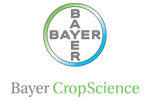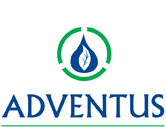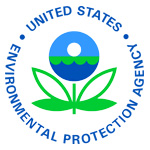Download PDF
8th Annual Pesticide Stewardship Conference
Stewardship Strategies and Tools
Asheville , North Carolina – February 24-27, 2008
The Pesticide Stewardship Alliance promotes networking and cooperation among parties from around the world who work to improve stewardship efforts – increasing effectiveness and efficiency through proper labeling, judicious application, proper handling of empty containers and waste minimization.
| Sun | 9:30a-3p | TPSA Tour: Sustainability at the Biltmore Estate - Open to Members & Guests | ||
| Sun | 3p-8p | Registration Open | ||
| Sun | 4p-6p | TPSA Board Meeting - Open to Members & Guests | ||
| Sun | Dinner on your own | |||
| Sun | 7-8:30p | Opening Reception - Poster & Displays PDPA Lasermeasurements Wind tunnel experiments Field drift experiments Comparison between drift measuring techniques Application of nematodes Optimization of spray equipment Poster_Mohr_Spray_Drift Poster_Gordon_AZM Poster_ACRC_Map-2008 |
||
| Mon | 6:45-8a | Full Breakfast and Roundtables 1) TPSA Future and PESP Strategy 2) Reconciling the Diversity of Drift Language on Labels 3) Engaging Ag Film Product Manufacturers in Life Cycle Stewardship – continued Tuesday at breakfast |
||
| Mon | 7-noon | Registration Open | ||
| Mon | 8-8:30a | Opening Session and Welcome - Carol Ramsay, TPSA President, Washington State University; Wayne Buhler, North Carolina State University; and Howard Isley, Assistant Commissioner, North Carolina Department of Agriculture and Consumer Services | ||
| Mon | 8:30-10a | Plenary – Stewardship from the Legal Perspective - Bill Ferguson, Bayer CropScience | ||
| Mon | 10-10:15a | Break | ||
| Mon | 10:15-11:45a | Session I-A Emerging Markets for Recycling Ag Plastic Films and Rigid Products | Session I-B Pesticide Spray Drift Mitigation Programs and Perspectives | |
| Mon | 12-12:45p | Luncheon | ||
| Mon | 1-2:30p | Session II-A Integrated Ag Plastics Management: Case Study from Wisconsin-Minnesota | Session II-B Pesticide Spray Quality & Droplet Sizes for Stewardship and Efficacy | Session II-C Stewardship Activities in West Africa |
| Mon | 2:35-3:00 | Submitted Papers A | Submitted Papers B | Submitted Papers C |
| Mon | 3:00-3:15 | Break | ||
| Mon | 3:15-4:45 | Session III-A Needed! An Improved Pesticide Label System for Stewardship | Session III-B Recordkeeping: Documenting Pesticide Application Stewardship | Session III-C More Bang for the Buck: Building Disposal Program Sustainability by Adding Services |
| Mon | 4:45-6:00p | TPSA Member Meeting – All conference attendees welcome! | ||
| Mon | 6-9p | Grand Reception and Awards Ceremony - Posters & Displays Open to Members & Guests Also: Demonstration of Big Foot Baling Equipment |
||
| Tues | 7-8:15a | Breakfast and Roundtables 1) Engaging Ag Film Product Manufacturers in Life Cycle Stewardship - continued 2) Multi-stakeholder Engagement on Pesticide Spray Drift Mitigation 3) Video-based Review of High Hazard Waste Management 4) Development of International Programs |
||
| Tues | 8:30-10a | Session IV A Pesticide Volatility Stewardship Activities | Session IV B Recycling Plastic Pesticide Containers: Volume Reduction Technologies | |
| Tues | 10-10:15a | Break Silent Auction: Bidding ends for 3 Items |
||
| Tues | 10:15-11:45a | Session V A Managing Hazardous Wastes Smarter: Using All Tools at Your Disposal | Session V B Plastic Pesticide Container Recycling Rules & Approaches | |
| Tues | 12-1:30p | Luncheon Silent Auction Completion through the Luncheon |
||
| Tues | 1:45-3:15p | Session VI A What’s in that Container? Case Studies in Specialty Waste Management | Session VI B Programs Designed to Reach Applicators and Protect the Public/Environment from Pesticide Misapplications | |
| Tues | 3:15p | Break | ||
| Tues | 3:30-5:00p | Session VII A Stewardship Visions for Dynamic E-Labeling | Session VII B Pesticide Container Collection Logistics | |
| Tues | 6-9p | North Carolina Style Pig Pickin’ Dinner and Entertainment at the Farm Open to Members & Guests |
||
| Wed | 7:30-8:45a | Continental Breakfast | ||
| Wed | 8:30a-3:30p | Workshop: Beyond DOT – Hazardous Waste Shipment in a Multi-Stream World | Workshop: Off-Target Movement Modeling: Uses and Limitations | |
| Wed | 12-1p | Lunch | ||
Biltmore Tour: The Biltmore House is a 250-room French Renaissance chateau that remains America ‘s largest privately owned home and 8,000-acre estate which houses the Vanderbilt’s winery.. It was built for George Vanderbilt in the 1890’s. Through a self-guided tour, discover original art from masters such as Renoir, Napoleon’s chess set, a library with 10,000 volumes, a Banquet Hall with a 70-foot ceiling, 65 fireplaces, an indoor pool, bowling alley, and priceless antiques. Among many other attractions, self-guided visits to the mansion and winery which each take about 90 minutes to 2 hours. The self-guided visit of the Winery concludes in the Tasting Room where you can enjoy complimentary wine tasting.
A bus will depart from the Renaissance Hotel at 9:30 am on Sunday, February 24 and arrive at the Biltmore Estate by 10:00. We’ll distribute tickets that will allow admission to the home and winery. Lunch from 12 noon to 1:30 pm will be at the Stable Cafe, adjacent to the chateau. We will depart from the Estate by 3:00 pm.
2008 Corporate Sponsors
 |
 |
 |
 |
 |
 |
2008 Conference Sponsors
 |
 |
 |
|
 |
 |
 |
 |
 |
 |
 |
|
 |
 |
||
 |
 |
 |
Stewardship from the Legal Perspective:
No Good Deed Goes Unpunished?
Bill Ferguson
Vice-President and
Associate General Counsel of Bayer CropScience LP
Session Details and Presentations
Sessions Listed in Sequence
| Session I A - 10:15-11:45a Emerging Markets for Recycling Ag Plastic Films and Rigid Products Moderator: Lois Levitan, Cornell University | Think Plastics® Produces Baleboard: Franchising the Operation – Chuck Sparks and Lisa Lackenbauer, Think Plastics, New Hamburg , Ontario , Canada Ag Plastic Recycling – John Schmitz, Agsi Plastic, Savage, MN |
| Session I B - 10:15-11:45a Pesticide Spray Drift Mitigation Programs and Perspectives Moderator: Jack Peterson, Arizona Department of Agriculture | Spray Drift Reduction Technology and Activities Stemming from Pesticide Program Dialogue Committee Workgroup – Jay Ellenberger , US EPA OPP Australia's Spray Drift Mitigation Measure– Andrew Hewitt, Univ. of Queensland , Australia Europe’s Application Monitoring and Equipment Verification – Dirk Rautman, Institut für Anwendungstechnik im Pflanzenschutz, Germany Canada’s Use of Buffers for Risk Mitigation – Ted Kucknicki, Pesticide Management Regulatory Agency , Canada Drift Mitigation Education Within the Chemical Industry – Mark Ledson, Syngenta |
| Session II A - 1:00-2:30p Integrated Ag Plastics Management: Case Study from Wisconsin-Minnesota Moderator: Roger Springman, Wisconsin Department of Agriculture, Trade and Consumer Protection | Total Ag Plastics Management: Case Study from Wisconsin-Minnesota Perspective from the Farm, Dennis Haubenschild, Minnesota Dairy Farmer State Government: Role of Economic Development Agency – Wayne Gjerde, Minnesota Office of Environmental Assistance Marketplace – John Schmitz, Agsi Plastic, Savage, MN The Big Foot Baler – Dennis Sutton, Big Foot Baler |
| Session II B - 1:00-2:30p Pesticide Spray Quality & Droplet Sizes for Stewardship and Efficacy Moderator: Carol Ramsay, Washington State University | Droplet Size Calculators: Generic Models for Application Support and Product-Specific Models For Label Compliance – Andrew Hewitt, University of Queensland Calibrating for Droplet Size – Robert E. Wolf, Kansas State University Drop to the Crop: Droplet Sizes Needed for Insect, Fungi, Weed Control and Drift Mitigation? – Dennis Gardisser, University of Arkansas Educating Applicators about Drift Potential – Steve Pearson, Spraying Systems Application Tools that Applicators Need –Lonnie Reed, Southern States Cooperative, NC |
| Session II C - 1:00-2:30p Stewardship Activities in West Africa Moderator: Don Mullins, Virginia Tech | Crop Quality Assurance in West Africa (and other emerging nations): Pesticide Safety Education – Pat Hipkins, Virginia Tech Mali Central Veterinary Laboratory – Safiatou Berte DEM, Environmental Toxicology and Quality Control Laboratory, Central Veterinary Laboratory , Mali Pesticide Residue Analysis In West Africa : Introducing the Quechers Method – Jean Cobb, Pesticide Residue Laboratory, Department of Biochemistry, Virginia Tech |
| Session A – Submitted Papers 2:35-3:00p | Activities and Services of EPA’s Environmental Stewardship Branch – Frank Ellis, U.S. EPA, Office of Pesticide Programs, Larry Elworth, Center for Agricultural Partnerships, Jeff Citrin, EnDyna Inc Oregon Pesticide Stewardship Partnerships: Water Quality Success Story – Kevin Masterson, Agency Toxics Coordinator, Oregon Department of Environmental Quality |
| Session B – Submitted Papers 2:35-3:00p | Comparison of Drift Potentials Between Air Induction and Conventional Nozzles – Heping Zhu, USDA Agricultural Research Service, Ohio Outreach and Stewardship Needs for Dry Flowable and Water-Dispersible Granule Formulation Products – Pat Hipkins, Virginia Tech Technology Research Unit |
| Session C – Submitted Papers 2:35-3:00p | Using Web Sites to Promote Global Product Stewardship, William H Hendrix, III, Michael C. Shaw and John J. Fitt, Jr., Dow AgroSciences Reaching Consumer Retailers with Stewardshipip – Frank Gaspirini, Responsible Industry for a Sound Environment |
| Session III A - 3:15-4:45p Needed! An Improved Pesticide Label System for Stewardship Moderator: Nancy Fitz, US EPA Office of Pesticide Programs | EPA Activities on Stewardship Label Language Improvements – Jim Roelofs , US EPA OPP AAPCO Discussion of Label Language – Dave Scott, Office of Indiana State Chemist Regulatory and Industry Constraints on Drift Label Language – Aldos Barefoot, DuPont and CropLife America Applicator Outreach Issues on Complex Label Language – Ples Spradley, University of Arkansas , AAPSE President |
| Session III B - 3:15-4:45p Recordkeeping: Documenting Pesticide Application Stewardship Moderator: Jeff Haynes, USDA Agricultural Marketing Service | Benefits of Recordkeeping – Bob Bellinger, Clemson University Issues for Changes to Federal Recordkeeping Requirements – Bonnie Poli, USDA Agricultural Marketing Service How to Educate Applicators on Importance of Keeping “Smart” Items? – Carol Ramsay , Washington State University What Can TPSA Do To Support Recordkeeping Education and Regulation? Gail Amos, Washington State Department of Agriculture |
| Session III C - 3:15-4:45p More Bang for the Buck: Building Disposal Program Sustainability by Adding Services Moderator: Fred Gabriel, Clean Harbors Environmental Services | Perspectives for Innovative Strategies: Adding Services and Building New Partnerships to Maintain Growth for Hazardous Chemical Collection Programs Kelby Neal, PSC Industrial Services Eddie Raynard, Greensboro & Guilford County / HHW Council Kenn Webb, ECOFLO Environmental Services Perspectives for Innovative Strategies: Adding Services and Building New Partnerships to Maintain Growth for Hazardous Chemical Collection Programs Kelby Neal, PSC Industrial Services Eddie Raynard, Greensboro & Guilford County / HHW Council Kenn Webb, ECOFLO Environmental Services |
| Session IV A - 8:30-10:00a Pesticide Volatility Stewardship Activities Moderator, Jerry Krebs, Tessenderlo Kerley | Metam Sodium Task Force Update - David Sullivan, Sullivan Environmental Consulting, Inc EPA Perspectives on Pesticide Volatility –Veronique LaCapra, US EPA OPP Off-Target Activities of Fumigants – Vince Hebert, Washington State University The Volatile Organic Compounds Initiative - Jim Wells, Environmental Solutions Group Good Stewardship Measures to Minimize Airborne Exposures to Agricultural Fumigants: Steps Applicators and Growers Can Take to Anticipate Evolving Environmental Regulations - David Sullivan, Sullivan and Associates |
| Session IV B - 8:30-10:00a Recycling Plastic Pesticide Containers: Volume Reduction Technologies Moderator: Don Bradley, Murray Equipment | Baling Technologies: Benefits and Limitations – Sergio Firpo, Azure Technologies Volume Reduction Technologies – Ron Perkins, Ag Container Recycling Council Open Discussion on Volume Reduction Technologies – Rick Yabroff, United Agri Products |
| Session V A - 10:15-11:45a Managing Hazardous Wastes Smarter: Using All Tools at Your Disposal. Moderator: Dan Schweitzer, Care Environmental Services | Successful Hazardous Chemical Collection Programs: Using a Wide Range of Tools, Techniques, and Practices to Maximize Efficiency and Serve New Audiences Tim Taylor, Effective Environmental Inc. Cary Hamilton , New Mexico Department of Agriculture |
| Session V B - 10:15-11:45a Plastic Pesticide Container Recycling Rules and Approaches Moderator: Steve Pizzitola, Tri-Rinse Inc. | Approaches for Southern States Recycling – Sam Gibson, US Ag Recycling North Carolina Container Recycling Successes and Challenges – Henry Wade, North Carolina Department of Agriculture and Consumer Services Container Recycling – An International Perspective – Cam Deveraux, CropLife Canada Update on EPA’s Pesticide Container Recycling – Nancy Fitz, US EPA OPP |
| Session VI A - 1:45-3:15p What’s in that Container? Case Studies in Specialty Waste Management Moderator: Roger Springman , Wisconsin Dept. of Agriculture | What’s Out There? Approaches for Identification for Packing, Labeling, and Transporting for High Hazard Business and Ag Wastes Joe Hoffman, Washington State Department of Agriculture David Lambrecht, Veolia Environmental Services |
| Session VI B - 1:45-3:15p Programs Designed to Reach Applicators and Protect the Public/Environment from Pesticide Misapplications Moderator: Vince Hebert, Washington State University | Engaging Growers in Stewardship Actions for Drift Mitigation – Frank Hall and Roger Downer, Ohio State University Operation S.A.F.E. and PAASS, Andrew Moore, National Agricultural Aviation Association Spray Safe Program: A Communication Model from Kern County , CA - Dale Nicol, Syngenta Fumigant Management Plans – Kurt Volker, Private Consultant Michigan Drift Management Plans – Brian Rowe, Michigan Department of Agriculture |
| Session VII A - 3:30-5:00p Stewardship Visions for Dynamic E-Labeling Moderator: Liza Fleeson, Virginia Department of Agriculture and Consumer Services | E-Labeling – What It Is and What It Could Be for Stewardship – Jim Gray, North Dakota Department of Agriculture Web-labeling/Stewardship Referrals are Here – Bill Hendrix, DowAgroSciences Web-based Labeling: EPA Assessment of Possibilities – Jim Roelofs, US EPA OPP Stewardship Vision of E-Labeling for the Ag Industry – Michele Schulz, Syngenta Open Discussion of Prospect for Stewardship and Web-based Labeling– Carol Ramsay, Washington State University |
| Session VII B - 3:30-5:00p Pesticide Container Collection Logistics Moderator: Johnny Berry, Syngenta | Container Recycling Survey of Growers, Commercial Applicators and Dealers – Danna Moore, Social & Economic Sciences Research Center, Washington State University Challenges Faced When Designing and Developing A Container Recycling Program – Rick Yabroff, United Agri Products Open Discussion for Collection Logistics– Don Bradley, Murray Equipment |
| Optional Workshop: Beyond DOT: Hazardous Waste Shipment in a Multi-Stream World Wednesday 8:30-3:30 Moderator: Derrick Bell, North Carolina Department of Agriculture and Consumer Services Goal: bring attendees current on rules, regulations, and scenarios involved with transporting regulated and non-regulated, mixed materials across state and county lines Clean Harbors Environmental Services transportation specialist US DOT hazardous waste representative State of North Carolina highway transportation specialist. |
|
| Optional Workshop: Off-Target Movement Modeling: Applications and Limitations Wednesday 8:30-3:30 Moderator: Harold Thistle, USDA Forest Service, West Virginia Goal: Showcase new, current, and revised spray drift models and discuss their unique applications and limitations. 8:30 am Model Presentations SprayAdvisor Jackie Strager, West Virginia University, Morgantown, WV, USA Bystander Exposure to Drift from Ground Spraying Clare Butler-Ellis, The Arable Group, Silsoe, UK Empirical Modeling of Deposition from Ground Spraying, David Nuyttens, Institute for Agricultural and Fisheries Research (ILVO), Merelbeke, Belgium Swath Offset Modeling & Integrated Avionic Systems Gerry Cormier, Forest Protection Limited, Fredericton, NB, CA Modeling Emissions and Dispersion of Volatile Pesticides David Sullivan, Sullivan Environmental, Alexandria, VA Modeling of In-canopy Dispersion of Pheromones Using a Puff Model Tara Strand, Pacific Northwest Laboratories, USDA Forest Service, 10:00 Break 10:15 Model Presentations Status and Applications of the AGDISP/AgDrift Modeling Systems Harold Thistle, USDA Forest Service, Morgantown, WV, USA Site specific assessment of spray drift hazard for avocados in New Zealand - John-Paul Praat, Simon Woodward and Rob Connell Lincoln Ventures Ltd., New Zealand WTDisp and the Use of Wind Tunnels in Estimating Drift from Ground Sprayers Andrew Hewitt, University of Queensland, Gatton, Queensland, AU Using FLUENT to Model Pheromone Movement in Plant Canopies Steve Edburg, Washington State University, Pullman, WA, USA The EPA Ground Sprayer Deposition Model Milt Teske, Continuum Dynamics Inc., Ewing, NJ, USA DriftSim Ground Sprayer Spray Drift Model -Heping Zhu, USDA-ARS, Wooster, OH, USA ( Erdal Ozkan, alternate presenter) 11:15 Interactive Session with Models Available to View 12:00 Lunch 1:00 Afternoon Session and Panel 3:30 Adjourn |
|
